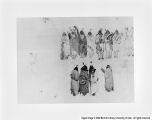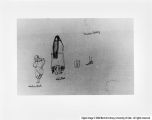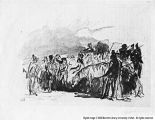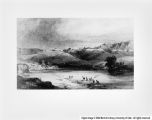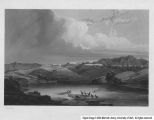| OCR Text |
Show 98 Maximilian and Bodmer were aware of the romantic implications of this painting and that their choice of using the painting as an illustration in the travelbook did not rest upon purely documentary considerations, since this particular watercolor was not the only rendering available to them. A second--and by far, less imaginative-watercolor of the castles was painted by Bodmer the following day, as the expedition continued up the Missouri river. ^5 The storm had passed and with it the initial emotional response. Bodmer's second painting, viewing the castles from the rear, is pretty and precise. Reverting to the picturesque realism of his Rhineland artistic views, Bodmer again painted the formation. However, this second watercolor is very different, for the castles overlook a peaceful and charming pastoral scene. Nature is no longer threatening. Dreamy trees drape the banks of the once-again tranquil river. Under a clear sky two buffalo graze on a hillside, much like domesticated cattle; there is no implication that these creatures are in possession of this world. In the clear light of day, the castles remain strictly a geological curiosity. The resemblance to architecture is strong, but the painting does not force belief through the compilation of romantic elements and associations. Thus, in selecting the more romantic of the two paintings for reproduction into aquatint, Maximilian and Bodmer made their intentions clear. Behind their choice rests the entire romantic landscape tradition and its influence on science as well as art. |
















































